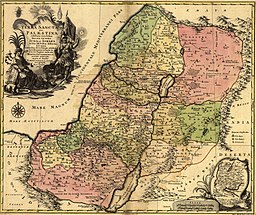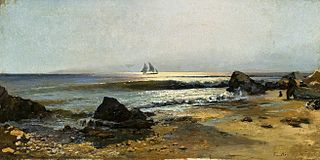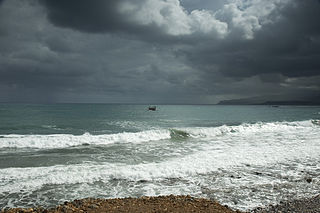
Tobias Conrad Lotter [Public domain], via Wikimedia Commons
William Joseph Mallory was one of the lesser known members of the East Kent School of Artists. He is mainly associated with seascapes painted in and around his home town of Deal, but he also completed a large number of religious works and illustrated a number of books of poetry by his close friend and travelling companion Thomas Punney.
Both Mallory and Punney visited the Holy Land on a number of occasions and the latter in his later years, lived in the Pas-de-Calais which occasioned frequent visits from Mallory from 1860 onwards.
A number of Mallory’s most famous works were painted in the Outreau area and were as prized as much as his Deal and Walmer paintings at the time of their completion.
Although celebrated during his long life after his death in 1879, his reputation waned and today Mallory is chiefly remembered for the oddity of his signature or to be more specific, that of his daughter.

Gennady Ladyzhensky [Public domain], via Wikimedia Commons
Anne Mallory was born in 1850 and from a very young age was remembered as always being in her father’s studio which faced the sea in Deal. It is said that in the autumn of 1853 the young Anne touched one of her father’s drying oil paintings with her thumb and this was not noticed by the artist until the work was completely dry. But far from being angry at his daughter for touching his work, Mallory requested that she would apply her left thumb print to all his paintings as a form of signature. When painting abroad he would take his daughter with him so that she could apply her strange signature as soon as the work was nearing completion.
Anne is recorded as visiting the Holy Land on no less than five occasions between 1853 and 1865 and she often served as a model for some of the lesser biblical characters represented.

Henri Adolphe Schaep [Public domain], via Wikimedia Commons
In 1870 Mallory lost both his wife Jane and his closest friend Punney within months of each other. This caused a shift in his work and a number of his seascapes from this period were darker and quite often showed violent storms and shipwrecks. Due to his failing health, Mallory did not travel abroad after 1875 but often painted the Holy Land and France from memory and could be found on clear days painting the nearby coast of France from the Deal aspect.

By Nat Pikozh (Stalida Sea Storm Uploaded by Alaniaris) [CC BY 2.0 (https://creativecommons.org/licenses/by/2.0)], via Wikimedia Commons
Anne, although a talented artist and a minor poet of some repute, never married and lived with Mallory in their sea front house in Deal. Funded by her father, she ran two very successful lace-making businesses in both Deal and Sandwich. On the 22nd of July 1879 Mallory was found dead at his easel on the beach between Deal and Walmer whilst adding the finishing touches to his final painting Storm Clouds over the Goodwin Sands.
His daughter, who was visiting a cousin in Kettering at the time did not apply her famous signature to this work and Storm Clouds over the Goodwin Sands remains the only work by Mallory from 1853 onwards that does not bear his daughters thumbprint. It was thought lost after the bombing of Deal during World War Two but came up for auction in 1960 and is currently owned by the Museum of Kent.
On hearing of her father’s death, Anne wrote in her diary her most remembered lines of poetry which are often quoted in anthologies and in books about Deal and the surrounding area:
Oh death bringing breeze
Why did you not cancel
Your appointment with my dear father
For just a week and a day?
Anne inherited the whole of her father’s substantial estate and for the next seventy three years lived in her childhood home where she became known in her later years as La Dentelliere de Kent.
This is of course a fiction created during an idle day in Deal last summer. However, when you visit the Arcade have you even considered the stories behind the many seascapes which one can find for sale? William Mallory might have existed and painted successfully. There were a great number of William Mallory’s active during the nineteenth century who are all but forgotten today. So when you next find a seascape whether it be a print or an original, take a little time out to consider the artist. If you purchase the painting, you might want to visit its location for pleasure.
We are very lucky that a great number of the coastal resorts and other places have not changed greatly so it is still quite easy to see what the artist was seeing over a century ago and what a splendid thought that is.
Just a short article this time and I hope that you enjoy your time by the sea.
Summer is on its way.
Happy Hunting
Stuart Miller-Osborne
